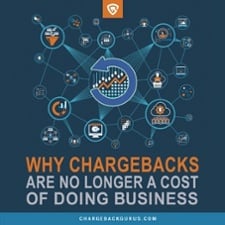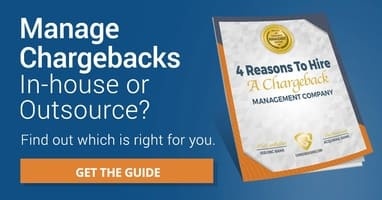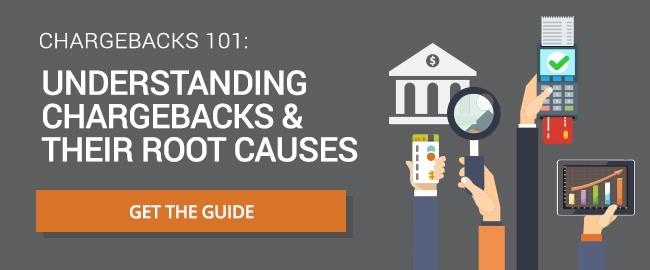Going Frictionless with One-Click Checkout
Table of Contents
The increasing frequency with which the average customer is making e-commerce purchases means that for some, the amount of time they spend entering or selecting payment and shipping information can start to feel unreasonable. That's part of the reason why estimates for the rate of cart abandonment across all industries often hover around 70%. Force customers to enter too much information or load too many pages and they just might reconsider their purchase altogether.
That's why many e-commerce merchants and platforms have begun offering one-click checkout. This option allows repeat customers to complete a purchase in as little as a single click, maximizing convenience and minimizing friction. How can merchants determine if one-click checkout is right for them, and what do they need to know about the risks and benefits of implementing it?
 For many years, Amazon literally owned the patent on one-click checkouts, and they used that time to strongly associate the concept with their own branding. With many customers making frequent purchases, Amazon was the perfect testing ground for one-click checkout. However, their rights to the exclusive use of the patent expired in 2017, opening up the possibility of one-click shopping to merchants everywhere.
For many years, Amazon literally owned the patent on one-click checkouts, and they used that time to strongly associate the concept with their own branding. With many customers making frequent purchases, Amazon was the perfect testing ground for one-click checkout. However, their rights to the exclusive use of the patent expired in 2017, opening up the possibility of one-click shopping to merchants everywhere.
The reason many retailers adopt one-click checkouts is that convenience and simplicity drive up conversion rates. The easier it is for a customer to go from considering a purchase to finalizing it, the more likely they are to buy.
While the checkout process can be useful for gathering important customer information, giving customers the chance to review their order for correctness, and screening orders for indicators of fraud, it also provides customers with opportunities to get bogged down in details and reconsider their purchase. Too much friction and the customer may even feel as though the merchant doesn’t really care about their business.
Striking the right balance between convenience versus caution is always tricky, and merchants who do decide to offer one-click checkout have important decisions to make about how to implement it.
Merchants can always devise their own solutions or work with their checkout platform provider, but many third parties, including the major card networks themselves, offer one-click payment solutions that merchants can easily integrate into their checkout pages.
How Does One-Click Checkout Work?
In the early days of e-commerce, multi-page checkouts were common. You’d review your order on the first page, provide your shipping address on the next page, enter your billing address on the one following, and finally you’d confirm the order on the very last page.
Slow connections could mean long load times between each page, and if a network error occurred—or the customer accidentally hit the “back” button—the whole process might need to be restarted from the beginning. Needless to say, sometimes customers would get fed up during a slow or error-prone checkout process and abandon their shopping cart. The e-commerce checkout process is much more streamlined these days, at least for most retailers.
One-click checkout represents the ultimate convenience, where the customer’s payment credentials and shipping information are already stored and confirmed, and the customer simply needs to click a single button to select an item, place it in their shopping cart, and check out.
(Of course, more than a few merchants cheat—like Amazon—and add a second confirmation step, but that’s okay.)
The key to one-click checkouts is that customers must essentially opt into them in advance by providing, and allowing the merchant to store, their billing and shipping information. This allows for speedy, frictionless checkouts, which in theory should help boost conversions.
Should Merchants Offer One-Click Checkout?
Merchants who sell the necessities of daily life, on the other hand—or eye-catching novelties, for that matter—might find that instantaneous ordering is just what their customers want. The downside of one-click checkout is that it doesn’t always give merchants the chance to fully communicate important information about the order to their customers, or vice versa.
If you’re going to use one-click checkout, transparency is crucial. You can’t let a streamlined checkout process obfuscate important information about your products, shipping, or sales policies.
The leading reason for cart abandonment is additional costs and fees. While one-click checkout might seem like it would fix cart abandonment entirely, customers who are surprised with additional fees and costs they didn't realize would be charged have a tendency to file chargebacks. Merchants who want to implement one-click checkout should strive to eliminate additional costs as much as possible, and any that can't be eliminated should be included in the displayed price at every opportunity.
 Even if you include a second click to confirm the final purchase price, many customers will speed through that page without really paying attention. While a dollar or two in taxes probably won't lead to a chargeback, a $10 shipping charge likely will.
Even if you include a second click to confirm the final purchase price, many customers will speed through that page without really paying attention. While a dollar or two in taxes probably won't lead to a chargeback, a $10 shipping charge likely will.
If you want to implement a true one-click solution, it's best to show customers with one-click checkout enabled the final cost of the purchase on the product page, either instead of or in addition to the list price.
The lack of review that accompanies one-click checkout can also lead to customer service issues when shoppers overlook important details or experience buyer’s remorse. Merchants should take extra care with products that can have compatibility issues, such as replacement parts.
Provide generous and flexible accommodations and easy refunds when customers have problems with one-click orders. Self-service customer service tools can help your buyers fix small issues that may come up after placing the order and can help make one-click checkouts more workable.
What Is Click to Pay?
Click to Pay is designed to be fully compliant with EMVCo’s Secure Remote Commerce specifications. Launched in the United States in 2019, Click to Pay was expanded to global markets in the summer of 2020.
To use Click to Pay, cardholders have to sign up through their card network or issuer’s website. Once they have done so, they can check out with merchants who use it by clicking the Click to Pay button, which uses tokenized data to complete the transaction.
This allows for a speedy checkout experience that’s uniform across all participating merchant sites, and it protects cardholders from fraud because it does not transmit the actual card account number to the merchant.
While Click to Pay may not technically be a one-click checkout option (at least for now), it offers similar benefits to merchants. It streamlines the checkout process, eliminating the need to enter payment and shipping information without requiring customers to create an account with that individual merchant.
There are lots of choices to make when it comes to implementing a one-click checkout solution, and merchants should give special consideration to platforms like Click to Pay that offer strong protection against fraud.
It’s not a given that every merchant needs one-click checkout, but for merchants whose watchwords are repeat business and instant gratification, one-click checkout can make good sense and help to increase their revenue. The important thing is to watch out for customer service issues that can potentially end up as disputes or chargebacks if they aren’t dealt with promptly and satisfactorily.
Thanks for following the Chargeback Gurus blog. Feel free to submit topic suggestions, questions, or requests for advice to: win@chargebackgurus.com


